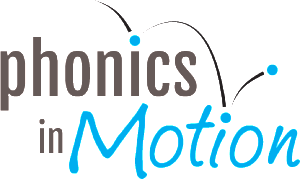Have you ever wondered how children learn to read? Or have you ever wondered why your child can’t “sound it out?” Learning how kids learn to read will make you a better teacher and give you scientific insights that can aid your child’s reading ability. The Science of Reading resulted from one of the […]
Read moreLearning Without Fear: Risk-Free Learning in Early Literacy
In today’s society, risk is something that we all have to manage on a daily basis. Risk can often manifest as fear of failure or embarrassment over mistakes in the classroom. A risk-free learning environment provides early learners with a safe place to learn and make mistakes without any risk of punishment or embarrassment. A […]
Read moreAn Inclusive Classroom Benefits Students in All Stages of Early Literacy
Mark loves to build things. Lainey loves to act things out. Cameron loves to draw. Marquis is a dancer and loves to move! Research shows that an inclusive classroom benefits all students. When planning, we need to focus equally on what children learn, and how they learn. Learners have different learning styles to acquire knowledge, […]
Read moreMoving Beyond Sound Walls: PIM’s Approach to Reading Instruction
Traditionally, primary education classrooms have utilized word walls. While they may have been somewhat successful, literary science shows that early learners respond better to and have better learning outcomes from sound walls. The problem is, word walls are often not used frequently throughout the whole year. Why? Teachers end up ditching them when they realize […]
Read moreProviding A Safe Learning Environment For Improved Literacy Outcomes
We are a diverse society with an equally diverse learning population. Students arrive at school with varying degrees of knowledge and capabilities. Providing a safe learning environment is the first step in laying a solid educational foundation. As any kindergarten teacher can tell you, some students walk in on the first day with the ability […]
Read moreThe Power of Muscle Memory in Reading and Writing
Learning how to read and write is a difficult task for children. It takes time, patience, and practice. Muscle memory can help! Incorporating kinesthetic movement in the classroom will make learning fun while improving reading skills! The kinesthetic movement in the classroom approach has been proven to increase early literacy outcomes by providing opportunities […]
Read moreBuilding a Diverse Classroom: The Benefits in Early Literacy Education
Promoting diversity in a classroom can have a positive effect on the quality of education. This could include different talents, experiences, and learning styles. Educators should be aware that some students may learn slower than others or at different speeds. By acknowledging this diversity and approaching it as something to celebrate rather than just […]
Read more
